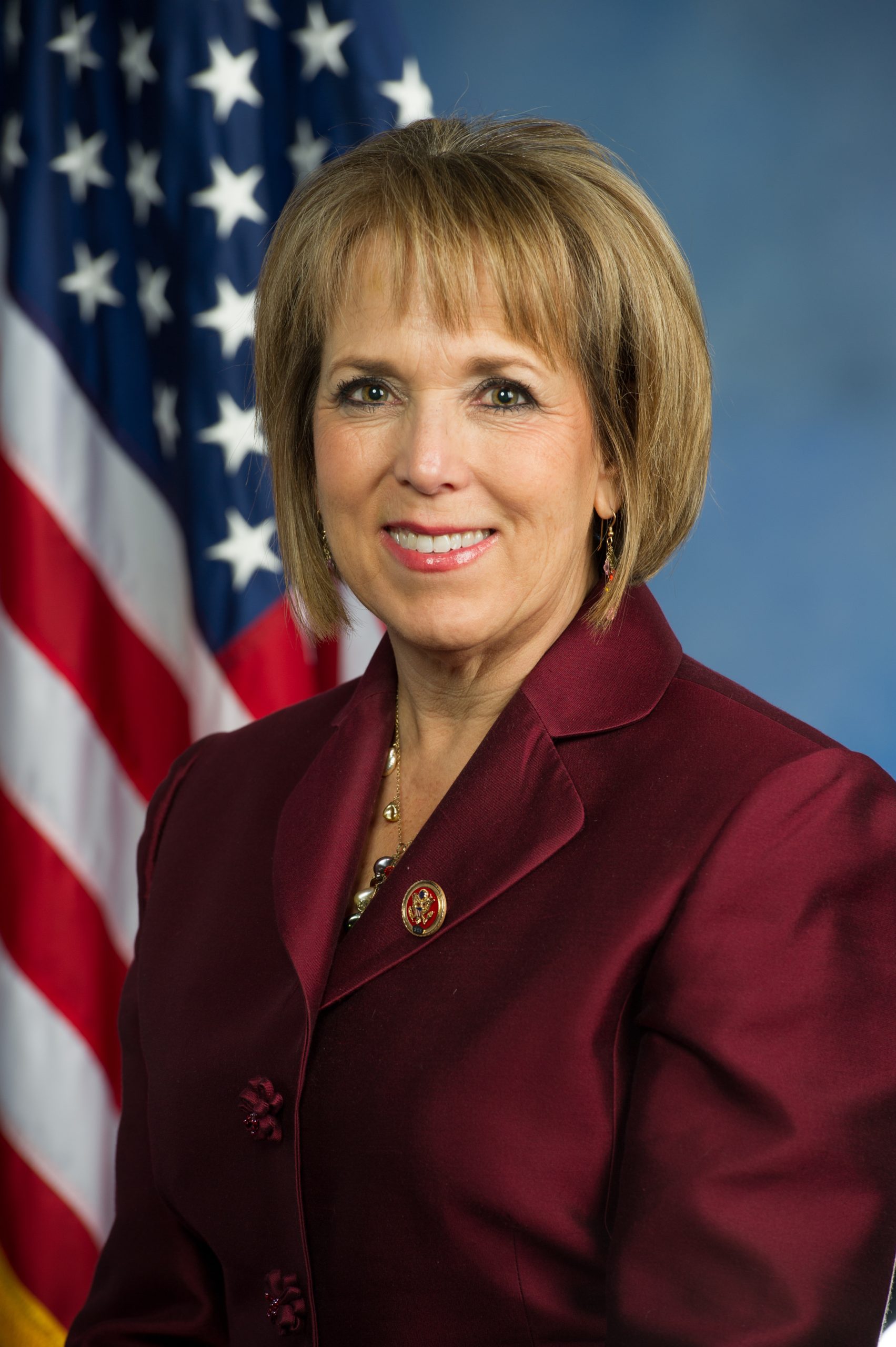After its reprise, an effort to push through the governor’s plan to create a market of treated brackish water failed, after committees did not meet in the final hours of the New Mexico Legislative session.
Gov. Michelle Lujan Grisham expressed her disappointment in a press conference after the session adjourned Thursday afternoon, and said she’ll keep fighting for the measure. “I won’t give up on it,” she said.
The Strategic Water Supply proposal originally asked for $500 million in severance tax bond sales to purchase treated oil and gas liquid waste and pump brackish water from deep underground. The plan wanted to create a commodity market to sell the treated water to replace fresh water in manufacturing solar and wind components and in hydrogen fuel. It was presented as a bill in the last days of the legislative session, after being stripped from the capital outlay package of long-term construction projects.
The slimmed down version of the bill asked for $100 million in bond sales and excluded oil and gas wastewater—often called produced water—for brackish water only. The effort faced long odds and was short on time. It stalled in the Senate Finance Committee.
Lujan Grisham said missteps came from messaging on the idea.
“Maybe I can change a bit about the messaging here… Look, any water that is unsafe ought to be cleaned up,” she said, slapping her hands for emphasis. “How do you think we’re going to do better on the jet fuel spill? How do you think we’re going to take uranium out of the water? How do people think we’re going to treat polluted water? We want more companies with more innovation.”
She continued, “I used the word commodity, maybe that was a poor choice.” “It is an economic developer… people do buy water, I guess I didn’t talk about the purchase of water rights, we purchase water,” Lujan Grisham said.
Lujan Grisham concluded by saying that the development of the treatment technology would be important to cleaning up contaminated water sources.
“Maybe I need to make it more about consumer protection to the House and to the Senate, and less about economic development,” she said.
It isn’t over, she said. “Expect that to be a priority throughout my remaining tenure,” Lujan Grisham concluded. She vows to meet with advocates and communicate better over the interim to prepare a bill for 2025.
Criticism and concern
Environmental and Indigenous groups, who lobbied against the bill, said they were confused why the legislation was brought forward with little public input. While pleased about the creative solution, the Strategic Water Supply proposal came as a surprise, said Rachel Conn, deputy director of water conservation nonprofit Amigos Bravos.
The idea needs vetting, and more public participation, she said, because of the potential impacts of more shallow, drinkable aquifers and co
ncerns that there were no plans laid out for brine disposal after the filtration process.
One concern that came from the bill was that the public right to protest did not apply to permits for drilling deep wells to access brackish water.
“It [removes] a critical component of public oversight water out of the process… [if] it’s not included in the process for this water, that’s a concern,” Conn said.
Other water solutions are not getting as much attention, said Tricia Snyder, the rivers and water program director at New Mexico Wild. In 2022, a task force made up of various water experts issued a 90-page report with 17 recommendations and more than 100 actions.
“Many of those remain unfunded,” Snyder said. “I hope that as we move forward with thinking about these bigger and bolder ideas, we’re also thinking about how we’re moving forward on the things that we already know, [things] there’s really broad consensus on.”
All the advocates said working on the next bill with the environmental agencies and the governor’s office is crucial.
The bill’s final hours
Lujan Grisham said she had been “working to get the bill” into the Senate Finance Committee, which failed to meet after floor sessions on Wednesday.
One lawmaker, Rep. Meredith Dixion (D-Albuquerque) expressed her disappointment that the Strategic Water Supply failed.
In some of the final debates on the House floor, Dixon asked Rep. Derrick Lente (D-Sandia) if there was any funding for brackish water treatment development in capital outlay, since it was stripped in the last weekend before the session. Lente, who sponsored the capital outlay package, said it was not part of the package, but that the governor sought $250 million in severance tax bond sales for the state to use to purchase treated brackish and oil and gas wastewater.
Dixion responded that she is concerned about the “impending reduction of revenue” from the oil and gas industry.
“I am disappointed that the governor’s initiative to support long-term water supply in this state and diversify the economy through water technologies is not something that this legislature was able to support,” Dixon said.
What’s next?
Advocacy groups said their plans are to work on educating the public and lawmakers over the interim session, anticipating the idea will be brought forward in the next session.
“I felt during the legislative committee hearings, there was a lot of uncertainty about New Mexico water law, about the ideas of commodification, the financialization of brackish and produced water,” said Julia Bernal (Sandia), executive director with Pueblo Action Alliance.
Bernal said the next steps mean more planning from environmental groups.
“I imagine that in the interim, this will only try to strengthen itself, so we’re gonna have to do the same,” Bernal said.
They aren’t the only ones planning on trying to connect.
In the halls of the Roundhouse Thursday, New Mexico State Engineer Mike Hamman told Source New Mexico there needed to be a more “comprehensive strategy around water,” during the interim meetings before the 2025 session. He linked that effort to redoubling the work done by a previous task force that contributed to the 50-year water plan.
“There’s a lot of disjointed water efforts on the legislative side, and maybe even on the advocate side,” Hamman said. “I’d like to start to pull it all together in a real, concerted multifaceted water strategy.”
Lujan Grisham enthusiastically said she would commit to meeting with groups who opposed the Strategic Water Supply.



